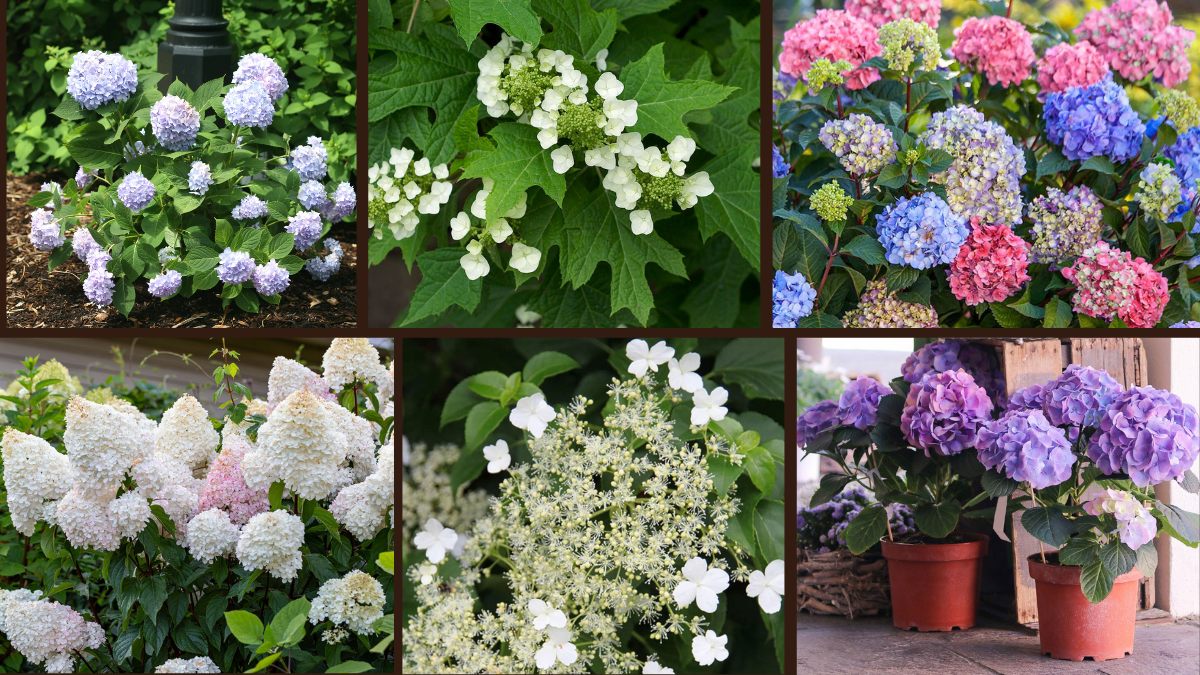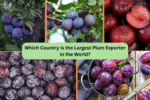Few garden plants deliver the lush, romantic charm of hydrangeas. Known for their large, colorful flower heads and long blooming season, hydrangeas add elegance and beauty to borders, foundation plantings, and shady corners. With different species offering a variety of flower shapes, colors, and growing habits, there’s a hydrangea for every landscape style. Whether you prefer classic mopheads or airy panicles, here are 9 types of hydrangeas to create a truly stunning garden display.
1. Bigleaf Hydrangea (Hydrangea macrophylla)
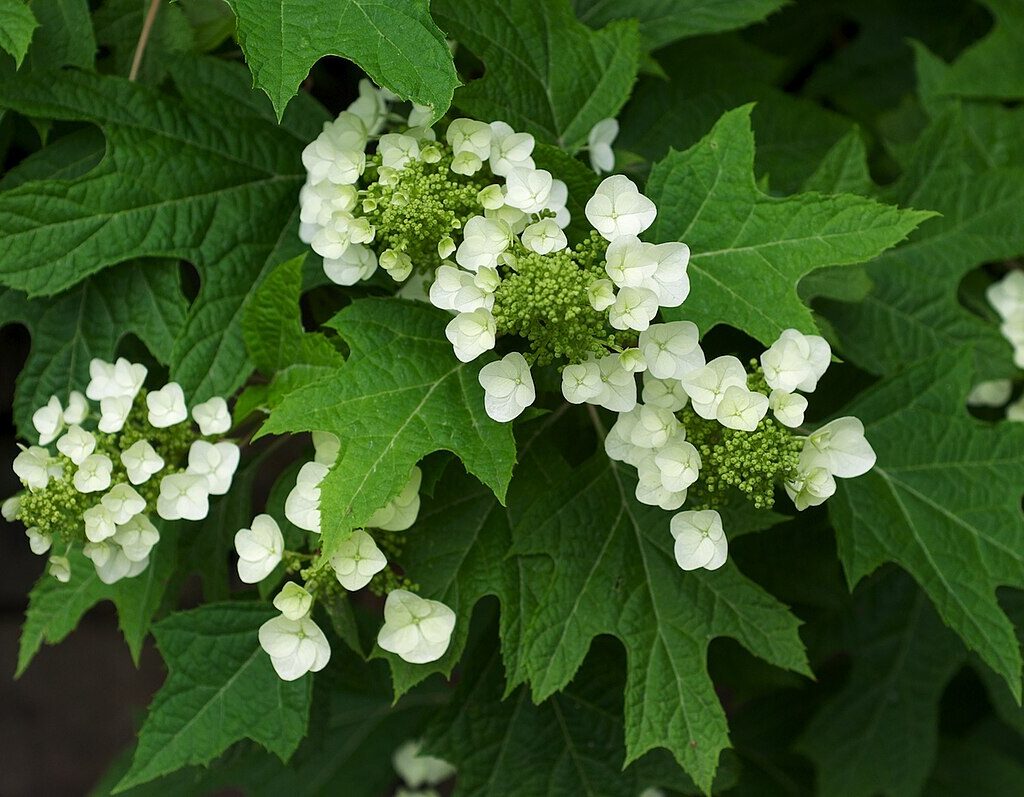
The most recognizable hydrangea variety, Bigleaf Hydrangea is famous for its large, round flower heads in shades of blue, pink, purple, or white. Depending on soil pH, the flowers shift color — acidic soil produces blue blooms, while alkaline soil turns them pink. Blooming in early to mid-summer, Bigleaf Hydrangeas grow 3 to 6 feet tall and prefer part shade and consistently moist, well-drained soil. Their classic mophead or lacecap flowers make them perfect for cottage gardens and shaded borders.
2. Panicle Hydrangea (Hydrangea paniculata)
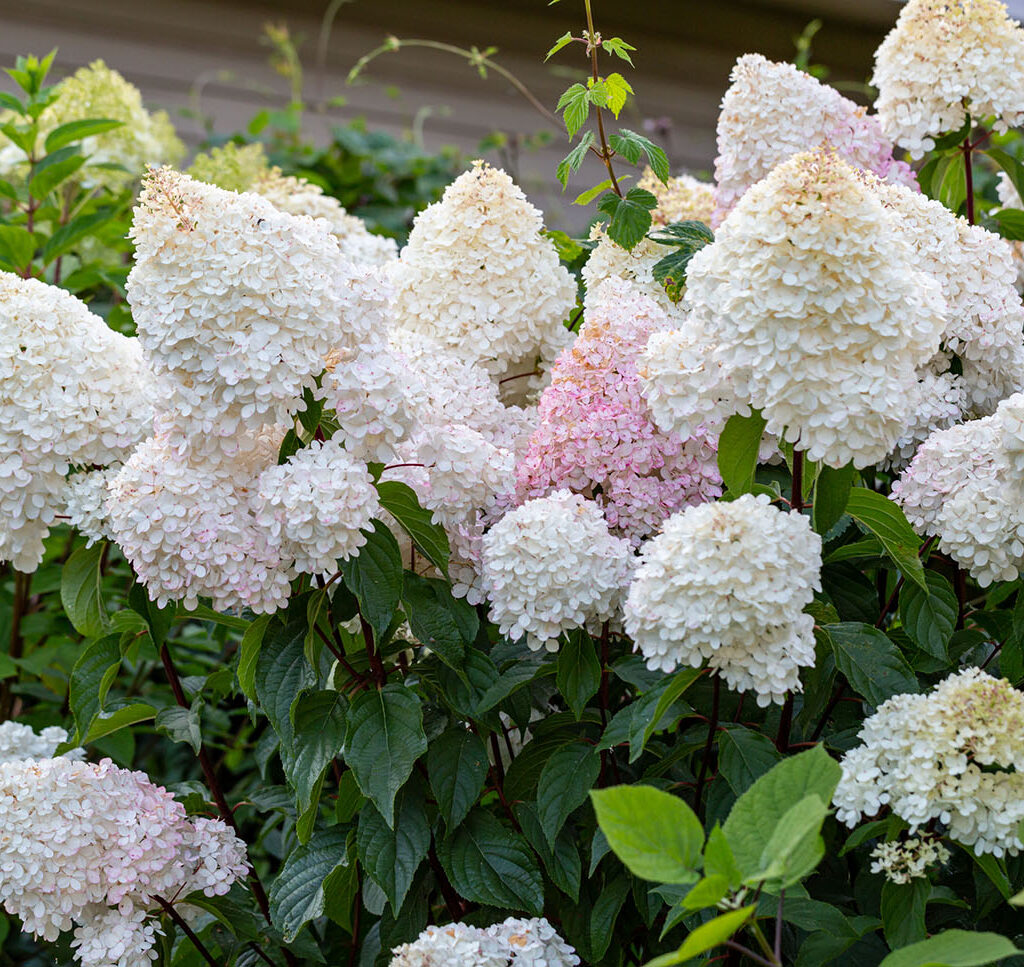
Known for their cone-shaped flower clusters, Panicle Hydrangeas are some of the hardiest and sun-tolerant hydrangeas. Blooming from mid-summer to fall, their flowers start white or pale green and gradually turn pink, rose, or burgundy as the season progresses. These hydrangeas grow up to 8 feet tall, though dwarf varieties like ‘Little Lime’ stay compact. Panicle Hydrangeas thrive in full sun to part shade and make striking additions to mixed borders, foundation plantings, and woodland edges.
3. Oakleaf Hydrangea (Hydrangea quercifolia)

Oakleaf Hydrangeas are prized for their bold, deeply lobed foliage that resembles oak leaves, which turn rich bronze, burgundy, and purple in fall. Their large, cone-shaped flower heads bloom in early to mid-summer, shifting from creamy white to soft pink. Growing 4 to 8 feet tall, Oakleaf Hydrangeas tolerate shade better than many varieties and prefer well-drained soil. They offer multi-season interest with gorgeous summer blooms and brilliant fall foliage, making them ideal for woodland gardens and shady borders.
4. Smooth Hydrangea (Hydrangea arborescens)
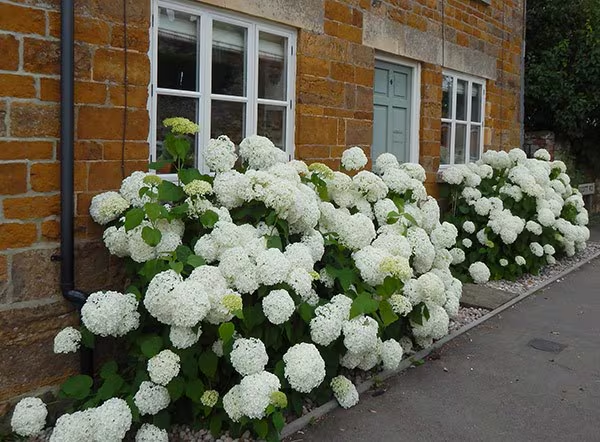
Smooth Hydrangeas, native to the U.S., are known for their large, ball-shaped clusters of white or pale green flowers. The beloved cultivar ‘Annabelle’ produces enormous 10-inch flower heads that bloom reliably from early summer into fall. These hydrangeas grow 3 to 5 feet tall, thrive in part shade, and tolerate various soil types. Their bold blooms, soft texture, and minimal maintenance needs make them favorites for cottage gardens, mass plantings, and naturalized areas.
5. Mountain Hydrangea (Hydrangea serrata)
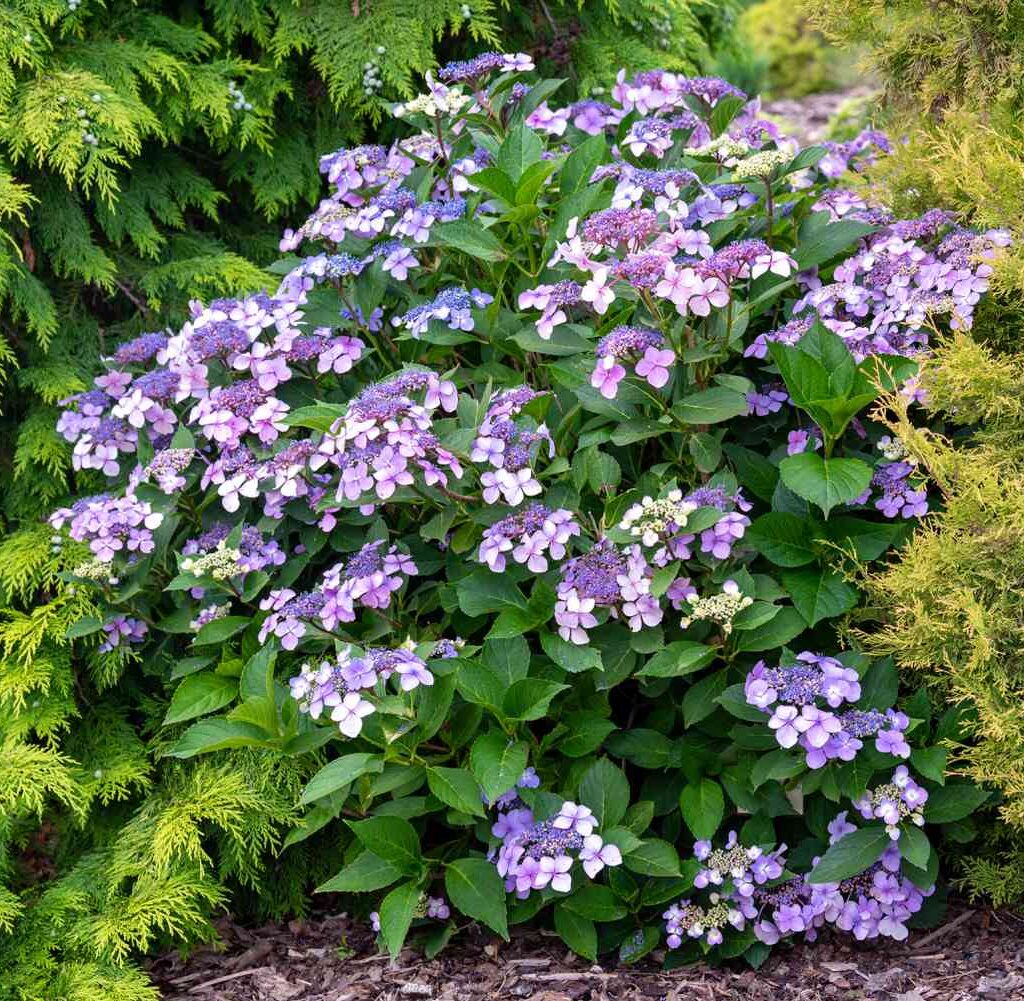
Similar to Bigleaf Hydrangeas but typically smaller and hardier, Mountain Hydrangeas feature lacecap-style flower heads — a ring of larger outer petals surrounding tiny fertile flowers. They bloom in shades of pink, blue, or lavender, influenced by soil pH. Blooming in early summer, Mountain Hydrangeas grow 2 to 4 feet tall, making them perfect for foundation plantings and shaded borders. Their delicate beauty and compact size are ideal for smaller gardens and containers.
6. Climbing Hydrangea (Hydrangea anomala subsp. petiolaris)
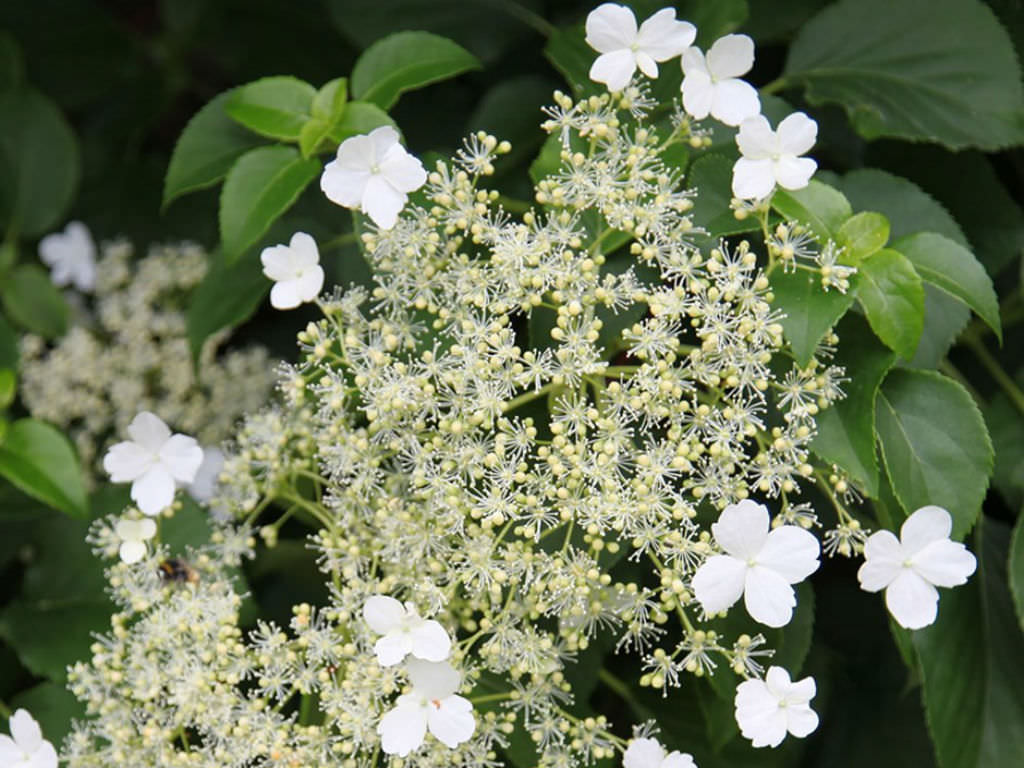
A unique, vigorous variety, the Climbing Hydrangea uses aerial rootlets to cling to walls, fences, and tree trunks. It produces fluffy, white, lacecap flowers in late spring to early summer, followed by attractive peeling bark in winter. This deciduous vine can reach 30 to 50 feet but grows slowly and rewards patience with elegant, cascading blooms. Climbing Hydrangeas prefer part shade and moist, fertile soil and are ideal for covering pergolas, stone walls, or shaded facades.
7. Reblooming Hydrangea (Hydrangea macrophylla reblooming varieties)

Modern hybrids like the Endless Summer® series have revolutionized hydrangea gardening by offering multiple blooming cycles throughout the season. These Bigleaf Hydrangeas bloom on both old and new wood, producing large mophead or lacecap flowers in shades of blue, pink, or purple, depending on soil pH. Reblooming Hydrangeas grow 3 to 5 feet tall, making them excellent for containers, borders, and cut flower gardens. With proper care, they bloom from early summer through fall, ensuring continuous color.
8. Tea of Heaven Hydrangea (Hydrangea aspera)
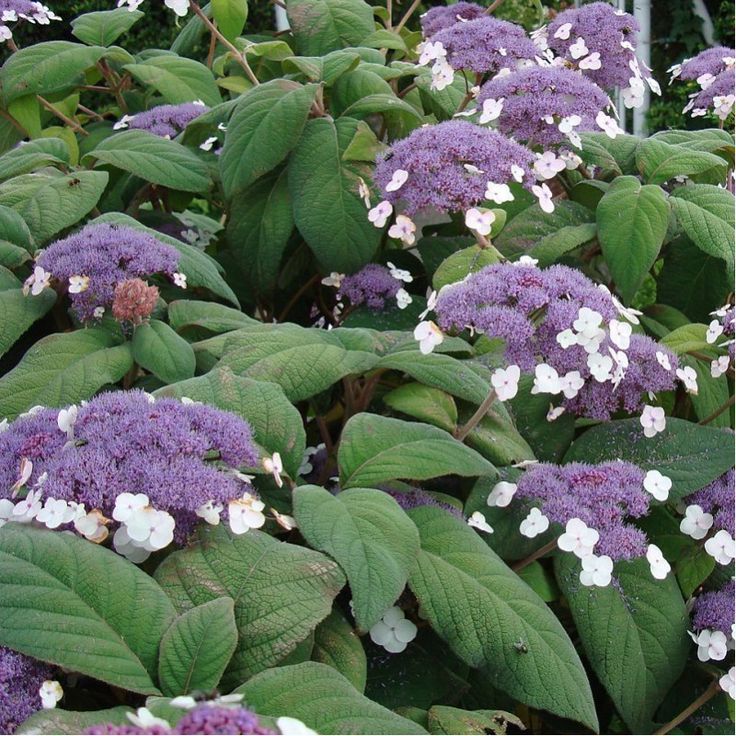
For gardeners seeking something unusual, Tea of Heaven Hydrangea offers a coarse-textured shrub with large lacecap flower clusters in shades of lavender, blue, or pink, blooming in mid to late summer. Growing 6 to 10 feet tall, its velvety leaves and delicate flower heads create a bold, exotic look. It prefers part shade and moist, well-drained soil, making it ideal for woodland or shade gardens. Its bold foliage and airy flowers add character to mixed shrub borders.
9. Dwarf Hydrangea (various compact cultivars)
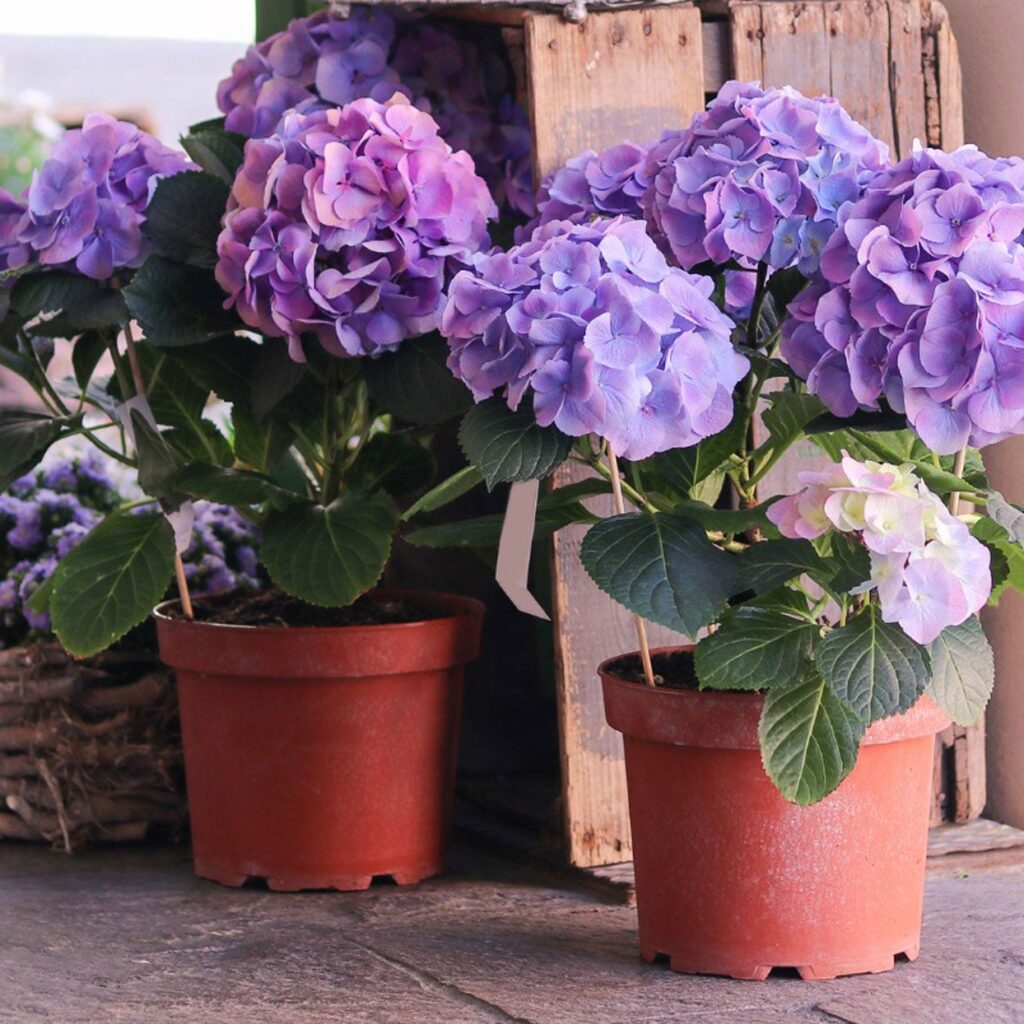
For small gardens or patio containers, Dwarf Hydrangeas offer all the beauty of larger types in a compact size. Popular varieties like ‘Bobo’ (Panicle) and ‘Mini Penny’ (Bigleaf) produce abundant blooms while staying under 3 feet tall. These petite hydrangeas are perfect for edging pathways, tucking into tight spaces, or decorating patios. Despite their small stature, they deliver impressive, colorful displays from early summer into fall and are remarkably easy to care for with regular watering and occasional pruning.
Final Thoughts
Hydrangeas are wonderfully versatile, offering options for sunny, shady, formal, or casual gardens. From the ever-popular Bigleaf Hydrangeas and airy Panicle varieties to climbing forms and reblooming cultivars, these 9 types of hydrangeas can create breathtaking displays throughout the growing season. Whether planted en masse or combined with perennials and ornamental grasses, hydrangeas bring bold texture, classic elegance, and lasting color to any landscape.
Would you like a hydrangea border plan or a mixed hydrangea planting guide too? I’d be happy to help design one for you!
